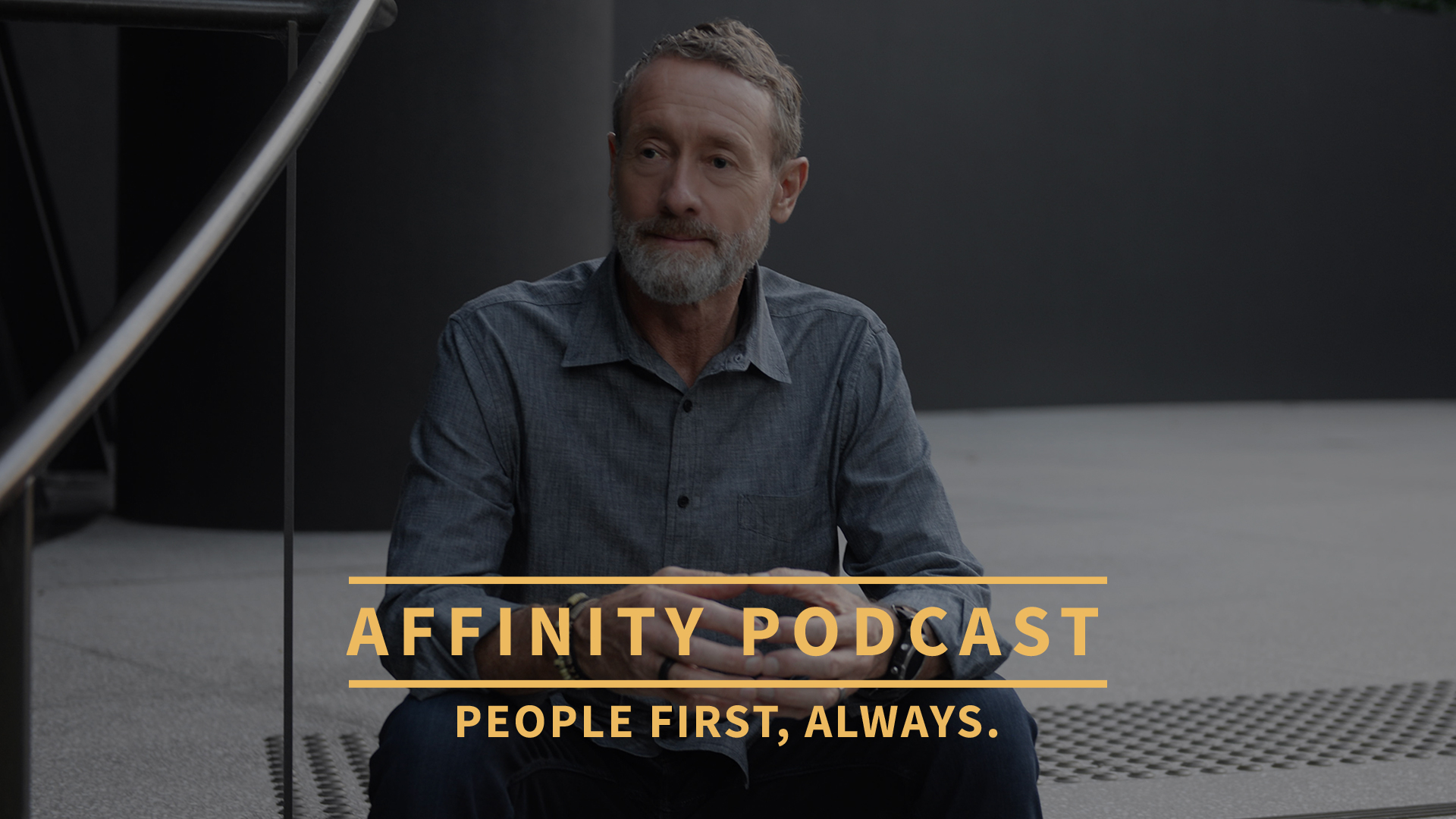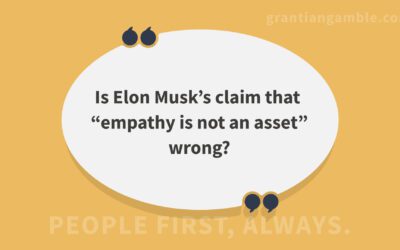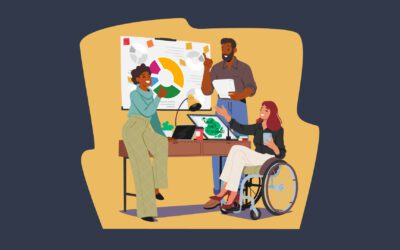Who Wins When BI (Business Intelligence) meets AI

Grant Ian Gamble is a best-selling mindful leadership author and speaker. He has over 30 years of experience in leading teams to create innovative customer experiences, building engaged workforces, and developing leaders who prioritize mindfulness in their approach.
The business world is abuzz with all things AI (Artificial Intelligence). But, what does it mean for jobs? How can it be leveraged? What should we be wary of when implementing AI? How does AI relate to what we do? And more importantly how do we apply AI to what we do?
All these and more questions abound. Having been in the AI space for over three years now, I have grown an appreciation of how powerful AI can be, but I have also come to recognize the importance of integrating BI (Business Intelligence) with AI to leverage insights AI can bring to light.
Today, BI and AI are becoming ubiquitous in the business world, but they serve different purposes AND most importantly work best when used together. Here’s a breakdown of their functionality:
BI: Making Sense of Data
- Focus: Analyzes historical data to identify trends, patterns, and performance metrics.
- Outputs: Provides reports, dashboards, and visualizations to help you understand their past performance and make informed decisions.
- Strengths: Easy to understand, efficient data organization, good for identifying correlations.
AI: Unveiling Hidden Insights
- Focus: Uses algorithms to learn from data and make predictions about the future, identify anomalies, and automate tasks.
- Outputs: Can generate forecasts, recommend actions, and even automate business processes based on data analysis.
- Strengths: Powerful pattern recognition, ability to handle complex data sets, ability to bring sentiment and ‘texture’ into focus, potential for automation.
The Synergy of BI and AI
While they are distinct, BI and AI complement each other perfectly:
- BI provides the foundation: Historical data analyzed by BI tools provides the training ground for AI algorithms.
- AI unlocks deeper insights: AI can analyze vast amounts of data and identify hidden patterns and sentiment that BI might miss.
- AI automates tasks: AI can take over repetitive tasks like data analysis and reporting, freeing up human resources for more strategic thinking.
Here are some examples of how BI and AI work together:
- Sales Forecasting: BI data on past sales trends can be combined with AI to predict future sales figures and optimize resource management and marketing focus.
- Customer Churn Prediction: AI can analyze customer behavior data to identify customers at risk of churning and suggest strategies to retain them.
- Referral Generation: AI can analyze customer feedback to detect sentiment and likelihood to refer and automate referral offers to those customers.
AI Meets BI in the Real World
At AFFINITY OS we use AI to do all the heavy lifting in analyzing customer feedback and team engagement in real time. We use BI to bring this feedback into focus. We use a combination of AI and BI to recommend and prioritize actions in a paint by numbers approach that drives retention, referrals and team engagement. The AI engine also illuminates trends that will impact financial performance and these lead indicators allow you to proactively address these opportunities or threats.
The Future of BI and AI
The integration of BI and AI is an ongoing trend. As AI technology continues to develop, we can expect even more powerful tools that combine data analysis, forecasting, and automation to give businesses a significant competitive edge.
If you want to know more about AI and BI in action feel free to reach out to me at grant@affinityos.ai
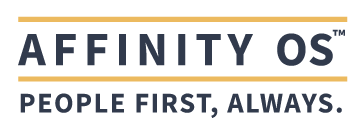
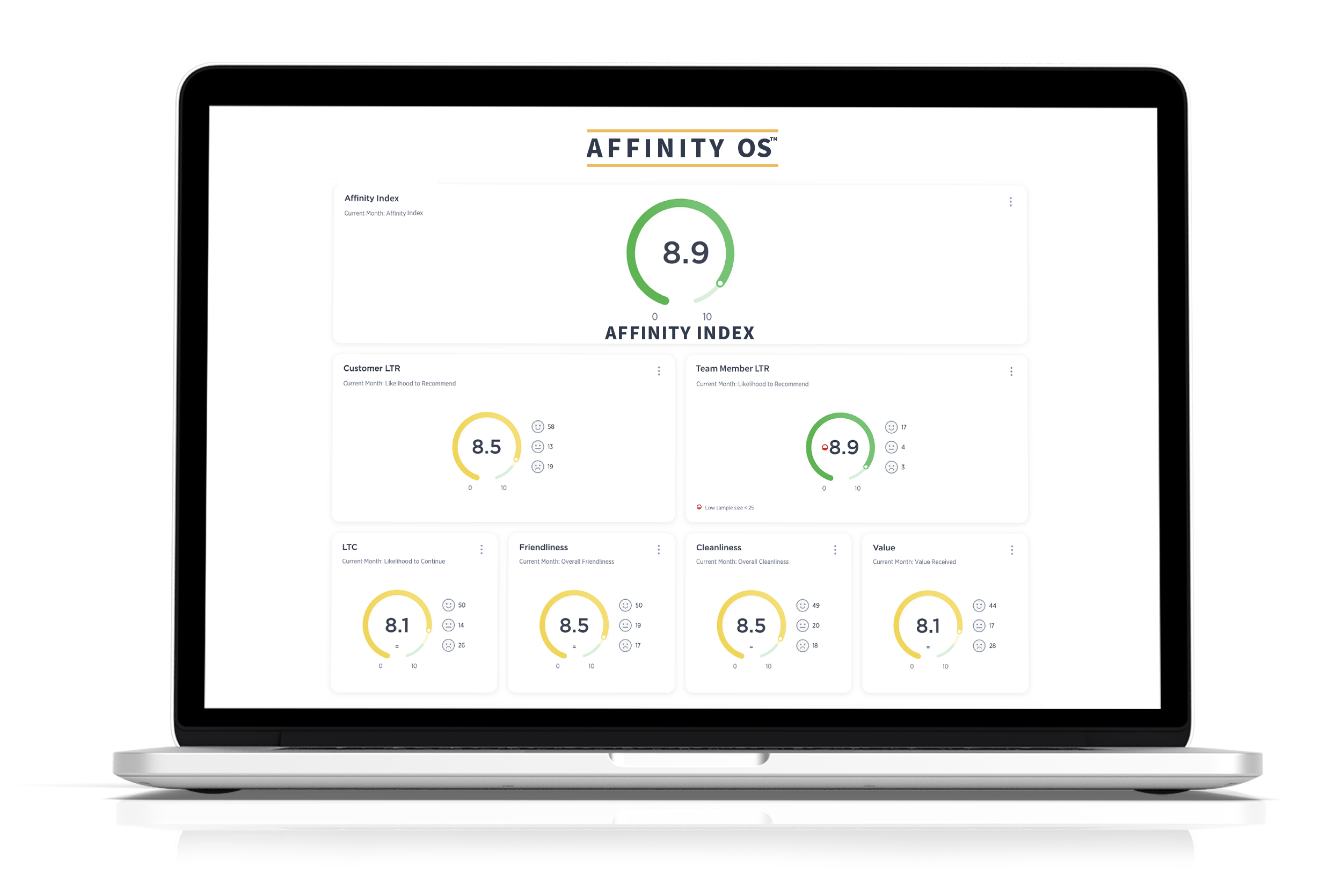 Interested in learning more about how to transform your organization’s approach to team member engagement and customer experience? Reach out to our team at AFFINITY OS, specialists in AI-driven customer experience and team member engagement optimization.
Interested in learning more about how to transform your organization’s approach to team member engagement and customer experience? Reach out to our team at AFFINITY OS, specialists in AI-driven customer experience and team member engagement optimization.

Dive into the heart of exceptional leadership and customer-centric success with AOS Academy. Our certification courses, guided by the “PEOPLE FIRST, ALWAYS” mantra, are designed to support professionals as mindful, effective leaders and service providers.
By integrating key insights from Grant Ian Gamble’s best-selling mindful leadership book, “The Affinity Principle”, we focus on nurturing people-centric cultures of empathy, effective communication, and customer service excellence.
The AOS Academy is more than just training – it’s a journey towards personal and professional transformation, ensuring every interaction and decision is rooted in understanding and valuing people first.
Put PEOPLE FIRST, ALWAYS and watch your business flourish.
Dive deep into the latest trends in customer experience and team engagement, mindful leadership and management. Discover practical tools and strategies that you can use to build a people-centric culture, the foundation for sustainable long-term business growth and success.
Led by mindful leadership expert, Grant Ian Gamble, a best-selling author and true visionary with over 30 years of experience in leading teams to create innovative customer experiences, building engaged, inspired and fulfilled workforces, and developing leaders who prioritize genuine connection in their approach.
The guiding principle behind all of Grant’s work is PEOPLE FIRST, ALWAYS.

More Articles:
Are You Truly Leading or Just Managing? You Need Real-Time Feedback
Great leadership is a journey. Yet, many top-tier leaders fall into the trap of believing they have arrived. After years of experience and success, it is easy to assume that your leadership is foolproof.
But true leadership is not about titles or tenure—it is about service, adaptability, and a relentless commitment to growth.
The best leaders do not operate in an echo chamber. They do not rely on assumptions or past successes to guide their decisions. Instead, they actively seek feedback—real-time, honest, unfiltered feedback—from both their Team Members and Customers. They understand that leadership is not about them—it is about the people they serve.
Is Elon Musk Wrong?
Elon Musk famously said, “Empathy is not an asset”.
Musk learned this from the video game Polytopia, which he played with his brother, coworkers, and partners. He made a list of life lessons from the game, which he calls Polytopia Life Lessons.
Musk’s indifference to empathy is not isolated when you look at notoriously ruthless business leaders such as Jeff Bezos, Bill Gates, and Steve Jobs. They have all had difficulties with interpersonal dynamics and yet been incredibly successful by the mainstream’s definition of success.
Embrace Workplace Wellbeing: Navigate Stress, Anxiety, Overwhelm and Burnout with AFFINITY OS’s™ NEW Psychosocial Risk (PSR) Management Tool
A state of stress, anxiety, overwhelm and burnout feels almost endemic these days. I hear it from friends, family members, work mates and peers. The pressures seem to come from all directions—work, media, global events, and personal life demands. Everywhere you turn, there’s more information, more conflict, more polarization, more uncertainty and it feels as if it’s escalating, relentlessly. This growing sense of overwhelm isn’t just affecting individuals; it’s affecting entire organizations, from the mental wellbeing of team members and tenure to overall workplace productivity.


